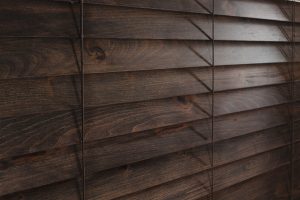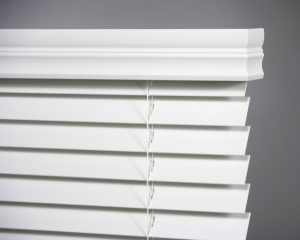 Which is a better fit for the homeowner? Real wood blinds or faux wood blinds?
Which is a better fit for the homeowner? Real wood blinds or faux wood blinds?
Cost
Let’s start with the main difference: the cost. Real wood blinds, on average, will cost 25% more than faux wood blinds. Homeowners will often gravitate toward the less expensive option, however others prefer the look and feel of a real wood blind.
Color
Your color selection is similar in both real and faux blinds.The color selection consists of colors such as: bright white, off white, stained colors, and distressed woods. It is recommended that real wood blinds pair better with stained colors versus faux wood blinds. This is because stained colors on faux blinds do not have the texture to replicate the real wood appearance.
 Cleaning
Cleaning
Another major difference between real and faux wood blinds is the ease of cleaning. The faux blind has a smoother surface which makes it easier to clean. On the contrary, a real wood blind has a rougher surface, which can make it more difficult to clean.
Weight
In addition, the weight of the blind is also a major difference. If you have an extremely large window, a real wood blind is the better option. In addition, if you plan on opening your window often, real wood blinds are recommended because they weigh less than faux wood blinds and are easier on the lift cords of the blind. Lifting a large faux wood blind can often be a task. However, both types of the blinds are very durable as long as you have a good quality faux wood blind.

Summary
Both types of wood blinds have their advantages, such as the faux wood blind being easier to clean and more cost efficient. On the other hand, a real wood blind is recommended for larger windows and certain stained options. However, whether you choose a real wood blind or faux wood blind, you will be pleased with the results.